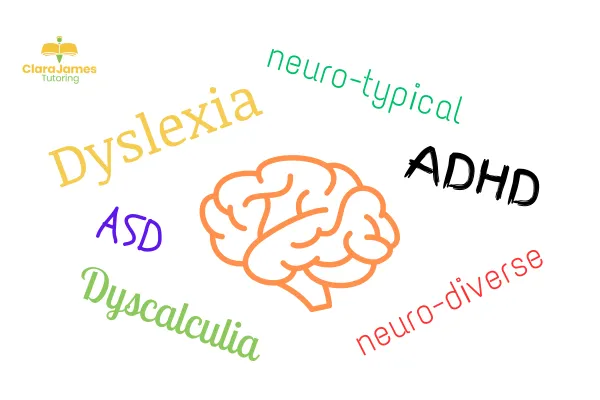Clara James Tutoring
BLOG POSTS

Tutoring children who are Autistic
Understanding Autism Spectrum Disorder (ASD) in Education
The other day I started to create the neurodiversity training for the Clara James Tutoring franchisees and wanted to share a summarised version of the first unit with you. I’ve split it into two with the first one aided at providing a better understanding for tutors as to what Autism is.
What is Autism Spectrum Disorder (ASD)?
Autism is considered a spectrum disorder, which means the characteristics can present in many different ways, though a core feature is that it affects how individuals communicate and perceive the world.
Some may be non-verbal, while others may talk for long periods about things they find fascinating, such as computers, trains, or dinosaurs.
Although understanding of autism has improved since the 1940s, there is still much to learn. If you're interested in the history of Autism, I suggest “Neurotribes: The Legacy of Autism and How to Think Smarter about People Who Think Differently”, by Steve Silberman.
Common Characteristics of Children with ASD
Delay in speech development
A monotonous or flat-sounding voice
Communicating in single words rather than full sentences or phrases
Often repeating set words or phrases
Some autistic individuals may show affection differently or have different ways of expressing it. This used to be a key indicator, but I would suggest not discounting those who are very affectionate, sometimes overly so.
Sensory Sensitivities and Social Interactions
They may not respond when their name is called, even if there is nothing wrong with their hearing.
They may appear to be overly dramatic or negative when asked to do something.
Sometimes they may seem rude, show little interest in others, or be unaware of personal space, but they may also be overprotective and intolerant of others encroaching on their space.
They may not enjoy situations such as parties and prefer playing alone rather than with others. For many, there is a noticeable lack of eye contact.
Some autistic people find comfort in repetitive actions such as rocking, flapping their hands, or flicking their fingers. Others find reassurance in playing with a certain toy in a specific way or adhering to routines, which, if disrupted, may cause anxiety and stress.
This is a just a summary of the unit, but I hope it will give you something to consider. If you are interested in reading further, I will be posting a second possibly more practical blog that goes deeper into how we can support those who are autistic when we are working with them. I hope you find them both interesting and helpful.
If you have any questions, do get in touch. Our email address is info@clarajamestutoring.co.uk
Morning,
I hope the week is going well.
So many people seem to be doing D of E and work experience
at the moment, good luck if that’s you and if you’re at Marlow Camp next
fingers crossed for good weather!
I’ve just finished a lesson on division. It seems to be
something that messes with the brains of so many people.
I found it got easier when I stopped thinking about it as
division and instead thought about it as multiplication. So, if for example I
had the question 396 divided by 3, I would look at it as 3x what = 3. My answer
would be 1. How many times would I need to multiply 3 to get to 9, (my answer
would be 3). Then 3x something = 6. My answer would be 2. Giving me the overall
answer of 132.
I know that’s a really simple example but hopefully it explains
my point.
Thankfully in schools they don’t often seem to need to do
long division, but I’ve worked with a couple of adults (generally nurses for
some reason) who have needed it.
I think I’ll explain this one in a video, as it will be too
complicated to explain it with words as bits get put all over the place. I hope
this makes sense though:
Enjoy the rest of the week and speak soon,
Dawn

